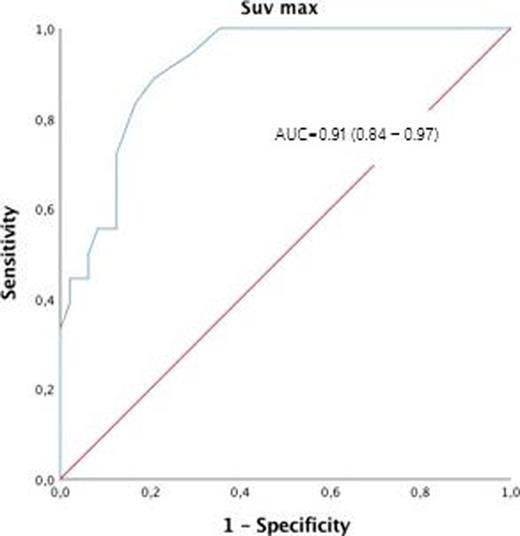-
PDF
- Split View
-
Views
-
Cite
Cite
J.P.L De Almeida, V Marinho, R Silva, F Goncalves, G Costa, L Goncalves, M.J Ferreira, Infectious endocarditis: improving diagnostic performance in native and prosthetic valve infectious with 18F-FDG PET/CT, European Heart Journal, Volume 41, Issue Supplement_2, November 2020, ehaa946.0296, https://doi.org/10.1093/ehjci/ehaa946.0296
Close - Share Icon Share
Abstract
The diagnosis of infective endocarditis (IE) remains a clinical challenge. Diagnostic accuracy of the modified Duke criteria is suboptimal for native valve endocarditis (NVE) and even worse in the presence of prosthetic material-related infection (PVE). We aim to evaluate the diagnostic performance of 18F-FDG PET in patients with suspected IE referred to perform PET/CT.
Consecutive patients with suspected IE, referred to perform PET/CT between May 2016 and June 2019 were included. Diagnostic performance of modified Duke criteria (mDC) and PET/ CT for IE for NVE and PVE was determined.
In total, 82 patients (mean age of 61±19 years, 62% of male gender) were enrolled. There were 67 18F-FDG PET/CT concordant results with final diagnosis, corresponding to a 96% of agreement, k=0.91 (p=0.04). A SUVmax cutoff value of ≥3.1 identified positive cases with 88.9% sensitivity and 70.0% specificity. In patients with NVE, the addition of PET/CT to the mDC resulted in a reduction of the number of possible IE cases (from 58% to 4.3%). In patients with PVE/intracardiac devices, PET/CT allowed reclassification of 67.4% of possible cases to 4.2%. An alternative diagnosis was provided in 55.6% of the negative IE cases.
18F-FDG PET/CT proved to be a useful diagnostic tool in patients with both suspected NVE and PVE with good sensitivity and specificity, resulting in a significant decrease of the number of possible endocarditis. Furthermore, it allowed the identification of the cause of clinical scenario in more than 50% of patients in which the diagnosis was excluded.

18F-FDG PET SUV max ROC for IE diagnosis
Type of funding source: None
- heart valve prosthesis
- positron-emission tomography
- endocarditis
- duke endocarditis service criteria
- fluorodeoxyglucose f18
- bacterial endocarditis
- endocarditis, infectious, native valve
- differential diagnosis
- male
- infections
- diagnosis
- computed tomography/positron emission tomography imaging
- clinical diagnostic instrument
- mdc protocol
- prostheses



